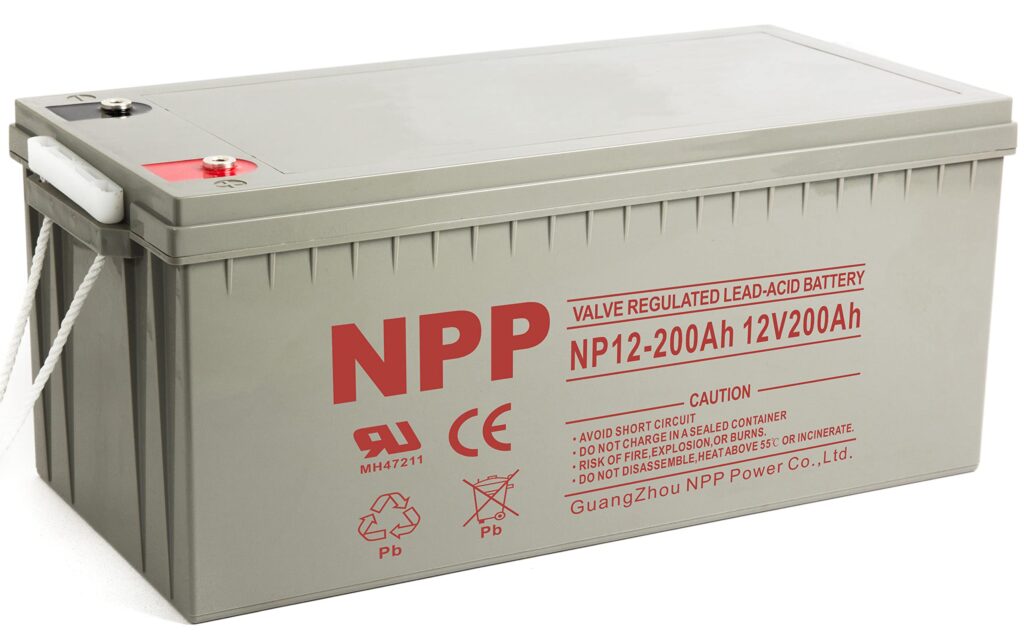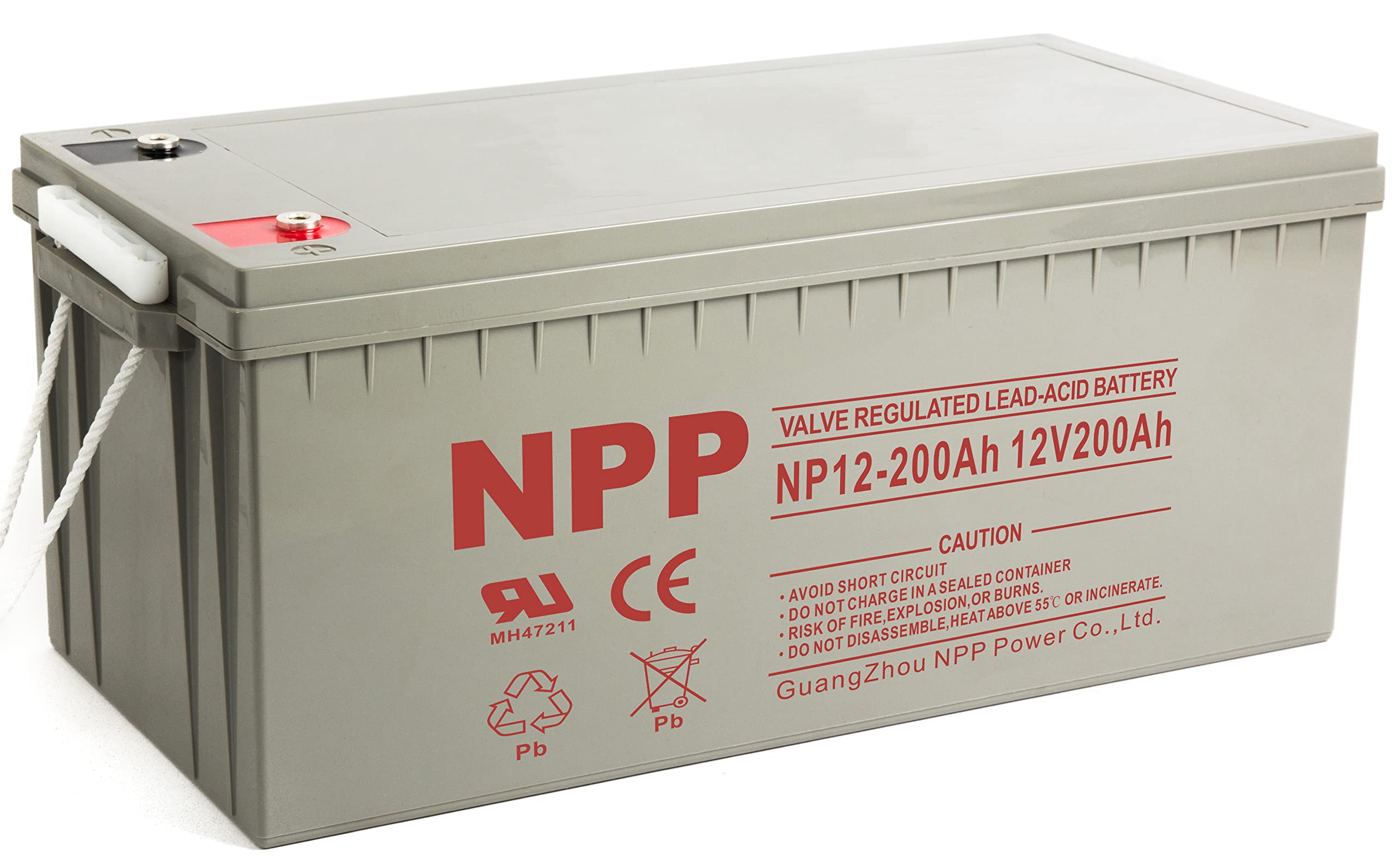
The Ultimate Guide to Marine 12V Deep Cycle Batteries
For boat owners and marine enthusiasts, a reliable power source is paramount. That’s where the marine 12V deep cycle battery comes into play. These batteries are specifically designed to withstand the harsh marine environment and provide consistent power for extended periods. Understanding the nuances of marine 12V deep cycle batteries is crucial for ensuring a safe and enjoyable experience on the water. This guide will delve into everything you need to know, from selecting the right battery to maintaining it for optimal performance. We’ll cover different battery types, their applications, and best practices for maximizing their lifespan.
What is a Marine 12V Deep Cycle Battery?
Unlike starting batteries that deliver a short burst of high power to start an engine, marine 12V deep cycle batteries are engineered to provide sustained power over a longer duration. They can be repeatedly discharged and recharged without significant damage, making them ideal for powering trolling motors, lights, electronics, and other onboard accessories. The ‘deep cycle’ aspect refers to their ability to withstand numerous discharge cycles, where they are significantly drained of their charge and then fully recharged.
Think of it like this: a starting battery is like a sprinter, capable of a quick burst of energy. A marine 12V deep cycle battery, on the other hand, is like a marathon runner, built for endurance and long-lasting performance.
Types of Marine 12V Deep Cycle Batteries
Several types of marine 12V deep cycle batteries are available, each with its own advantages and disadvantages. The most common types include:
- Flooded Lead-Acid (FLA): These are the most traditional and often the most affordable option. They require regular maintenance, including checking and refilling electrolyte levels. They also need to be vented properly to prevent the buildup of explosive gases.
- Absorbent Glass Mat (AGM): AGM batteries are a type of sealed lead-acid battery where the electrolyte is absorbed into a fiberglass mat. They are maintenance-free, spill-proof, and offer better vibration resistance than FLA batteries. They also typically have a longer lifespan.
- Gel Cell: Similar to AGM batteries, gel cell batteries are also sealed lead-acid batteries, but the electrolyte is in a gel form. They are even more resistant to vibration and extreme temperatures than AGM batteries. However, they are more sensitive to overcharging.
- Lithium-Ion (LiFePO4): Lithium-ion batteries, particularly Lithium Iron Phosphate (LiFePO4), are the newest and most advanced type. They offer superior energy density, longer lifespan, faster charging times, and are significantly lighter than lead-acid batteries. However, they are also the most expensive.
Choosing the Right Marine 12V Deep Cycle Battery
Selecting the right marine 12V deep cycle battery depends on several factors, including:
- Power Requirements: Calculate the total power consumption of all the devices you plan to run on the battery. This will help you determine the required amp-hour (Ah) capacity.
- Battery Size and Weight: Consider the available space and weight limitations on your boat. Lithium-ion batteries offer significant weight savings.
- Budget: Battery prices can vary significantly depending on the type and capacity. Determine your budget and prioritize the features that are most important to you.
- Maintenance Requirements: If you prefer a low-maintenance option, AGM or gel cell batteries are ideal.
- Environmental Conditions: Consider the typical operating temperatures and vibration levels. AGM and gel cell batteries are more resistant to extreme conditions.
For example, if you’re primarily using the battery for a trolling motor, a higher amp-hour rating is crucial for extended run times. If weight is a concern, a lithium-ion marine 12V deep cycle battery might be the best choice, despite the higher upfront cost. [See also: Understanding Marine Battery Amp Hours]
Understanding Amp-Hours (Ah) and Capacity
Amp-hours (Ah) are a measure of a battery’s capacity to deliver a certain amount of current over a specific period. A 100Ah marine 12V deep cycle battery, for example, can theoretically deliver 5 amps for 20 hours (100Ah / 5A = 20 hours) or 1 amp for 100 hours. However, it’s important to note that batteries typically perform best when discharged to no more than 50% of their capacity to maximize lifespan. Therefore, you should choose a battery with a capacity that is at least twice your expected power needs.
When calculating your power needs, consider all the devices you’ll be using, including lights, pumps, electronics, and trolling motors. Add up the amp draw of each device and multiply it by the number of hours you expect to use it. This will give you a rough estimate of your total amp-hour consumption.
Maintaining Your Marine 12V Deep Cycle Battery
Proper maintenance is essential for maximizing the lifespan of your marine 12V deep cycle battery. Here are some key tips:
- Regularly Check Voltage: Use a voltmeter to check the battery’s voltage. A fully charged 12V battery should read around 12.6-12.8 volts.
- Keep Terminals Clean: Clean the battery terminals regularly with a wire brush and baking soda solution to remove corrosion.
- Use a Smart Charger: Use a smart charger designed for marine 12V deep cycle batteries. These chargers automatically adjust the charging voltage and current to prevent overcharging and damage.
- Avoid Deep Discharges: As mentioned earlier, avoid discharging the battery below 50% of its capacity whenever possible.
- Store Properly: If you’re storing your boat for the winter, fully charge the battery and disconnect it from the electrical system. Store it in a cool, dry place.
- Check Electrolyte Levels (FLA Batteries): For flooded lead-acid batteries, regularly check the electrolyte levels and add distilled water as needed.
Neglecting maintenance can significantly shorten the lifespan of your marine 12V deep cycle battery and lead to premature failure. [See also: Marine Battery Charging Best Practices]
Charging Marine 12V Deep Cycle Batteries
Proper charging is crucial for maintaining the health and longevity of your marine 12V deep cycle battery. Using the correct charging method and voltage is essential to avoid damage. Here’s a breakdown of charging recommendations for different battery types:
- Flooded Lead-Acid (FLA): Use a charger specifically designed for FLA batteries. Avoid overcharging, as it can lead to water loss and damage to the battery plates.
- Absorbent Glass Mat (AGM): AGM batteries require a slightly higher charging voltage than FLA batteries. Use a charger with an AGM setting.
- Gel Cell: Gel cell batteries are very sensitive to overcharging. Use a charger with a gel cell setting and carefully monitor the charging process.
- Lithium-Ion (LiFePO4): Lithium-ion batteries require a dedicated lithium-ion charger. These chargers are designed to provide the correct charging voltage and current profile for LiFePO4 batteries.
Investing in a quality smart charger is highly recommended. Smart chargers automatically adjust the charging parameters based on the battery’s state of charge and temperature, ensuring optimal charging and preventing damage.
Troubleshooting Common Marine 12V Deep Cycle Battery Issues
Even with proper maintenance, you may encounter issues with your marine 12V deep cycle battery. Here are some common problems and their solutions:
- Battery Won’t Hold a Charge: This could be due to sulfation, a buildup of lead sulfate crystals on the battery plates. Try using a desulfating charger to reverse the sulfation. If that doesn’t work, the battery may need to be replaced.
- Battery Drains Quickly: This could be due to a parasitic drain, where devices are drawing power even when they’re turned off. Check for any devices that are continuously drawing power and disconnect them.
- Battery is Overheating: Overheating can be caused by overcharging or excessive discharge rates. Check the charging voltage and current, and reduce the load on the battery.
- Corrosion on Terminals: Clean the terminals with a wire brush and baking soda solution. Apply a corrosion inhibitor to prevent future corrosion.
Safety Precautions
Working with marine 12V deep cycle batteries can be dangerous if proper safety precautions are not taken. Always follow these guidelines:
- Wear Safety Glasses: Battery acid can cause serious eye damage.
- Wear Gloves: Battery acid can also irritate the skin.
- Work in a Well-Ventilated Area: Batteries can produce explosive gases.
- Avoid Sparks and Flames: Batteries can ignite flammable materials.
- Disconnect the Battery Before Working on Electrical Systems: This will prevent accidental shocks.
The Future of Marine Batteries
The marine battery industry is constantly evolving, with advancements in lithium-ion technology leading the way. Lithium-ion marine 12V deep cycle batteries are becoming increasingly popular due to their superior performance, longer lifespan, and lighter weight. As the technology matures and prices come down, lithium-ion batteries are likely to become the dominant choice for marine applications. Other emerging technologies, such as solid-state batteries, also hold promise for the future of marine power.
Conclusion
Choosing and maintaining the right marine 12V deep cycle battery is essential for ensuring a reliable and enjoyable boating experience. By understanding the different battery types, their applications, and best practices for maintenance, you can maximize the lifespan of your battery and avoid costly replacements. Whether you opt for a traditional flooded lead-acid battery or a cutting-edge lithium-ion battery, proper care and attention will ensure that your battery provides years of dependable service. Remember to always prioritize safety when working with batteries and consult with a qualified marine technician if you have any questions or concerns.

